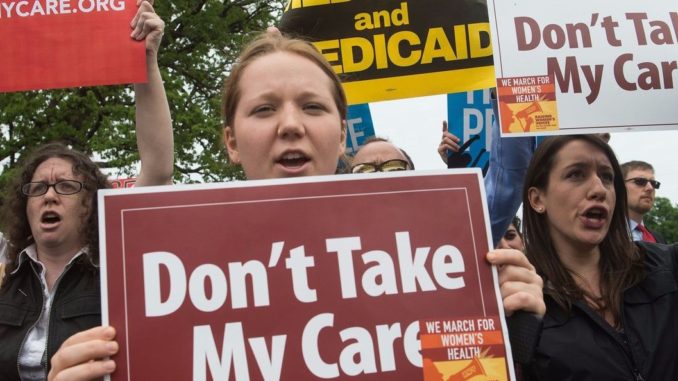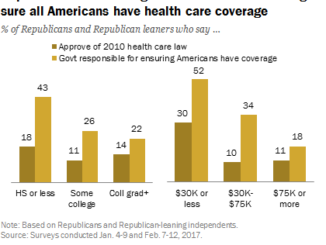
by Philip Bump


Alaska sort of breaks the scale here, given the plunge in tax credits that residents can expect to see. But setting Alaska aside, the average decrease in subsidies in red states will be more than twice the average decrease in blue states.

What’s more, the effects by county will be about the same. Across the board, regardless of income (at left) or age bracket, counties that backed Trump will see a bigger reduction in subsidies than those that voted for Hillary Clinton — until you get to those who make $75,000 or more a year.

This is important for a critical reason: The Congressional Budget Office anticipates that increases in insurance costs — inevitable if subsidies decline — will eventually price people out of buying coverage. A big chunk of the expected drop in the number of people covered will come from people deciding that they simply can’t afford coverage any more.
To cobble together enough votes to ensure passage of the AHCA the Republicans embraced an amendment that would allow states to apply for waivers that let insurers change rates for those with preexisting conditions. This, too, could put residents of red states at disproportionate risk — both because there’s a correlation between support for Trump and the density of the population with preexisting conditions, and because politically redder states are more likely to use the opportunity to apply for such a waiver.

One exception to this pattern is in the AHCA’s proposed cuts to Medicaid. Since the Medicaid expansion that covered millions of Americans was more heavily adopted in blue states, those states would see more of an effect.
Otherwise, the bill affects Republican states more heavily than Democratic ones. This appears to be a side effect that House Republicans are prepared to accept.



